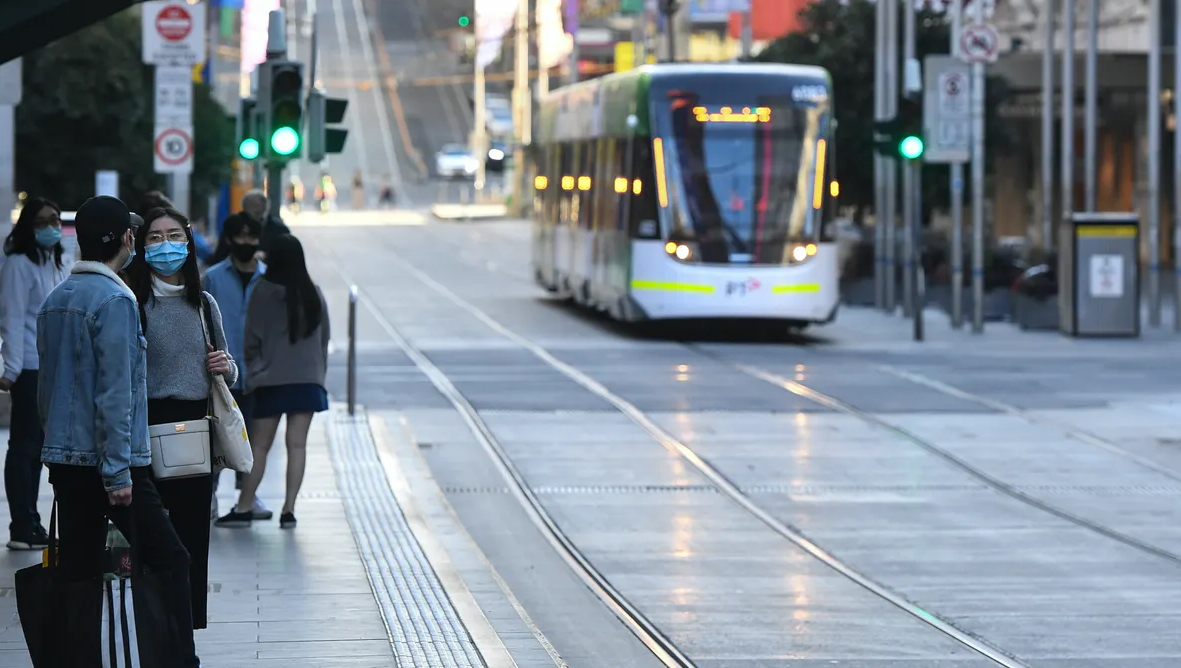COVID will leave Australia with smaller economy and older population: Frydenberg
- Written by The Conversation

Josh Frydenberg has painted a sombre picture of the outlook for the Australian economy, saying that by mid next year it is set to be 6% smaller than forecast at the end of last year.
The treasurer also warned wages growth will be subdued for years, in a Thursday speech setting the scene for the October 6 budget[1].
While reaffirming that the government’s temporary COVID measures needed to be phased out, in a message designed to reassure Frydenberg indicated the government’s focus would be economic recovery rather than budget repair until unemployment was back “comfortably” under 6%.
“Only through repairing the economy can we repair the budget,” he said.
Frydenberg said the pandemic would have long lasting effects on the economy and the budget.
“Our economy will be persistently smaller as a result of the pandemic than forecast in the 2019-20 MYEFO [December budget update], both in real and nominal terms.
"In the near term, real GDP is forecast to grow strongly, but this growth will come off a lower base.
"By the end of 2020-21, Australia’s real economy is expected to be around 6% smaller than forecast in the 2019-20 MYEFO,” he said.
The recession put pressure on three key drivers of growth – population, participation and productivity, Frydenberg said.
“Australia’s future population will be smaller, and older, than we previously assumed because of the sharp drop we are seeing in net overseas migration,” he said.
Population growth was expected to slow to its lowest rate in more than a century.
The budget was expected to show net migration outflows were now likely in both 2020-21 and 2021-22.
“While migration will eventually return to the levels we are accustomed to, lost migrants will not be replaced.
"And given our migrant workers tend, on average, to be younger, this will lower labour force participation and average hours worked across the economy into the future.”
As with past recessions, here and abroad, the unemployment rate would take time to return to pre-crisis levels. “This economic scarring, together with lower levels of business investment, is likely to dampen participation and productivity — the other two key elements of potential growth,” Frydenberg said.
“The other key change in our economy, will be a persistently lower level of prices and wages.
"With high levels of spare capacity in the economy, it will be some time before inflation returns to the mid-point of the Reserve Bank’s target range.
"And wages growth is also likely to remain subdued for at least the next few years, until the jobs market tightens,” Frydenberg said.
The changes to the economy would weaken the medium term budget position, despite targeted support being phased out.
“A smaller economy, with lower price and wage growth, will generate less income for the government over the medium-term.
"Income taxes will grow more slowly, reflecting a smaller wages bill.
"Corporate taxes will also grow more slowly, reflecting lower profits and economic activity.”
Frydenberg said that in the near term, government payments would spike, from the big temporary support.
“Over the medium term, the level of payments, in dollars, is likely to remain broadly comparable to our estimates at MYEFO, once our temporary fiscal support has finished.
"However, this level of payments will represent a larger share of a smaller economy.
"By the end of the medium-term period, payments are still expected to be materially higher than pre-COVID levels as a share of GDP.
"So … the changes to our economy that flow from this COVID recession will have a lasting impact on our budget position, even as our targeted policy support is unwound.
"Lower tax receipts and higher spending as a share of the economy will impact our fiscal position for many years to come. Even as the economy recovers.
"This is the nature of this unprecedented COVID-19 recession.”
Frydenberg said the budget would recalibrate the fiscal strategy to reflect the new circumstances.
There would be two phases.
The first phase, focused on boosting business and consumer confidence and boosting jobs and growth, would have three elements.
“First, we will continue to allow the automatic stabilisers to work freely to support the economy.
"Second, we will continue to provide temporary, proportionate and targeted fiscal support, including through tax measures, to leverage private sector jobs and investment.
"Third, we will continue to push ahead with structural reforms that position the economy for the jobs of the future and which improve the ease of doing business.
"The first phase of our strategy will remain in place until unemployment is on a clear path back to pre-crisis levels” – comfortably under 6 %.
Phase 2, focused on restoring the fiscal position, would also have three elements.
“First, we will maintain our central focus on jobs and growth, combined with structural reforms that increase our economy’s potential.
"Second, there will be a deliberate shift from providing temporary and targeted support for the economy to stabilising gross and net debt as a share of the economy.
"Our 23.9 % cap on the tax to GDP ratio will be retained.
"Third, we will start the hard work of rebuilding our fiscal buffers, so that we can be prepared for the next economic shock,” Frydenberg said.
“Our revised fiscal strategy is consistent with our core values. These have not changed.
"It will maintain our emphasis on fiscal discipline, lower taxes, containing the size of government and investing in a strong economy.
"But as we should, we will place greater weight on supporting the economic recovery in the near term and on economic reforms that lift potential growth in the medium term.”
References
- ^ setting the scene for the October 6 budget (ministers.treasury.gov.au)

















